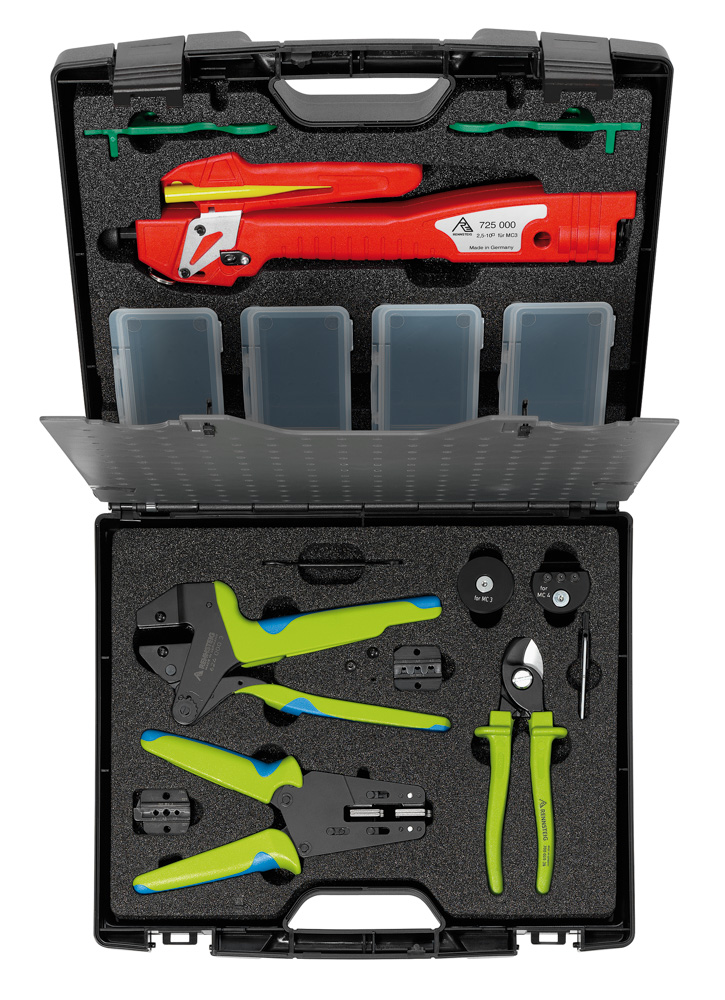
In the world of solar energy and industrial electrical systems, connectors play a crucial role in ensuring efficient and safe connections. Among the most commonly used connectors in photovoltaic (PV) systems are the MC3 and MC4 connectors. While they may seem similar at first glance, there are important differences between the two that can impact their suitability for various applications. This article will explore what MC3 and MC4 connectors are, their uses in industrial settings, and a detailed comparison of their similarities and differences. We will also provide guidance on when to choose one over the other.
What Are MC3 and MC4 Connectors?
MC3 Connectors
MC3 connectors are a type of electrical connector commonly used in solar PV systems to connect solar panels together. The “MC” stands for “Multi-Contact,” a Swiss company that developed this type of connector. The “3” in MC3 refers to the 3 mm diameter pin used in these connectors. MC3 connectors are designed to provide a reliable connection between solar panels, ensuring that the electrical current flows efficiently from one panel to the next.
MC4 Connectors
MC4 connectors, like MC3 connectors, are also used in solar PV systems. However, they are a more modern version, with “4” referring to the 4 mm diameter pin. MC4 connectors have become the industry standard for solar panel connections due to their improved design and enhanced safety features. They are widely used in industrial and commercial solar installations, as well as in residential solar setups.
Industrial Uses of MC3 and MC4 Connectors
Both MC3 and MC4 connectors are primarily used in the solar energy industry to connect solar panels in series or parallel configurations. These connectors are crucial for creating a secure and weather-resistant connection between panels, ensuring that the system operates efficiently and safely. They are also used in other industrial applications where reliable electrical connections are necessary, such as in the construction of large-scale electrical grids and renewable energy systems.
Why Are Connectors Important in Industrial Settings?
Connectors like MC3 and MC4 are essential in industrial settings because they provide a quick and secure way to connect electrical components without the need for complex wiring. In solar PV systems, connectors ensure that the panels are properly connected, which is vital for the system’s overall performance and safety. A reliable connection minimizes the risk of power loss, short circuits, and electrical fires.
Similarities Between MC3 and MC4 Connectors
- Functionality: Both MC3 and MC4 connectors are designed to connect solar panels together in a PV system, facilitating the flow of electricity from one panel to another.
- Weather Resistance: Both types of connectors are built to withstand harsh environmental conditions, including UV exposure, moisture, and temperature fluctuations, making them suitable for outdoor use.
- Ease of Use: Both MC3 and MC4 connectors feature a simple plug-and-play design that allows for quick and easy installation without the need for specialized tools.
Differences Between MC3 and MC4 Connectors
- Pin Diameter: The most obvious difference between MC3 and MC4 connectors is the pin diameter. MC3 connectors have a 3 mm diameter pin, while MC4 connectors have a 4 mm diameter pin. This difference affects the amount of current each connector can handle.
- Locking Mechanism: MC4 connectors feature a more advanced locking mechanism compared to MC3 connectors. The locking system in MC4 connectors ensures a more secure and stable connection, reducing the risk of accidental disconnection.
- Current Capacity: Due to their larger pin size, MC4 connectors can handle higher current loads than MC3 connectors. This makes MC4 connectors more suitable for large-scale solar installations where higher currents are common.
- Standardization: MC4 connectors have become the industry standard for solar PV systems, while MC3 connectors are now less commonly used. This standardization means that MC4 connectors are more widely available and compatible with newer solar panels and equipment.
When to Use MC3 vs. MC4 Connectors
When to Use MC3 Connectors
MC3 connectors might still be found in older solar installations or in small-scale projects where lower current capacities are sufficient. If you are working on a system that already uses MC3 connectors, it may be more practical to continue using them to maintain compatibility.
When to Use MC4 Connectors
MC4 connectors should be the go-to choice for most modern solar installations due to their higher current capacity, improved safety features, and widespread industry acceptance. If you are installing a new solar system, especially a larger one, MC4 connectors are likely the best option. They offer better security, greater durability, and are more likely to be compatible with current and future solar technologies.
Conclusion
MC3 and MC4 connectors are both vital components in solar PV systems, providing the necessary connections between panels. While they share some similarities in function and design, the differences in pin size, current capacity, and locking mechanisms make them suitable for different applications. MC4 connectors, with their enhanced features, have become the industry standard, particularly in larger and more modern solar installations. Understanding these differences and choosing the appropriate connector type is crucial for ensuring the efficiency, safety, and longevity of your solar energy system.

